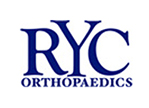News
Alternative for pain control after knee replacement surgery
Source: Science Daily
Injecting a newer long-acting numbing medicine called liposomal bupivacaine into the tissue surrounding the knee during surgery may providea faster recovery and higher patient satisfaction, a new study has found.
Why treating shoulder pain in baseball pitchers and other throwing athletes is so difficult
Source: Science Daily
Despite increasing medical knowledge, treating shoulder pain in baseball pitchers and other throwing athletes remains one of the most challenging tasks in sports medicine. Results of treatment as not as predictable as patients, doctors or coaches would like to think.
Osteoporosis: Steroid Danger
Source: Ivanhoe
10-million Americans have osteoporosis and 18-million more are at risk. The bone disease leads to an increase in fractures in the hip, spine and wrist accounting for one-point-five million painful fractures each year and one woman’s harrowing story of recovery is inspiring.
Link possible between oral contraceptive use, ACL injury in females
Source: Healio
Researchers from Denmark have uncovered a potential link between oral contraceptive use and instances of ACL injuries that required surgical intervention in women. The researchers evaluated 4,497 women who were treated operatively for an ACL injury between July 2005 and December 2011 and 8,858 age-matched, uninjured controls.
The difficulties of treating shoulder pain in baseball pitchers
Source: Medical News Today
Results of treating shoulder pain in baseball pitchers and other throwing athletes are not as predictable as doctors, patients and coaches would like to think, according to a report in the journal Physical Medicine and Rehabilitation Clinics of North America.
Thumbs-up for mind-controlled robotic arm
Source: Science Daily
A paralyzed woman who controlled a robotic arm using just her thoughts has taken another step towards restoring her natural movements by controlling the arm with a range of complex hand movements.
Staying at Home for Knee Rehab
Source: DailyRx
After a knee replacement, there’s no place like home for your physical therapy — or at least home may be just as good a place as a clinic to do your exercises.
In a new study, knee replacement patients who followed a six-week, monitored exercise program at home showed similar progress to those who were in regular outpatient rehabilitation programs.
Frequent BMD tests unnecessary for postmenopausal women with good scores
Source: Healio
Postmenopausal women not diagnosed for osteoporosis on an initial bone mineral density test are unlikely to sustain a major osteoporotic fracture or to reap any benefit from repeat screening before age 65 years, according to research published in Menopause.
“This longitudinal study found that, among postmenopausal women aged 50 to 64 years without osteoporosis on their first BMD test, less than 1% experienced a hip or clinical vertebral fracture and less than 3% experienced a major osteoporotic fracture by 7 years,” the researchers wrote.
Frequent BMD tests unnecessary for postmenopausal women with good scores
Source: Healio
Postmenopausal women not diagnosed for osteoporosis on an initial bone mineral density test are unlikely to sustain a major osteoporotic fracture or to reap any benefit from repeat screening before age 65 years, according to research published in Menopause.
“This longitudinal study found that, among postmenopausal women aged 50 to 64 years without osteoporosis on their first BMD test, less than 1% experienced a hip or clinical vertebral fracture and less than 3% experienced a major osteoporotic fracture by 7 years,” the researchers wrote.
Overuse injuries becoming more common in young athletes
Source : Science Daily
From Little League players injuring their elbow ligaments to soccer and basketball players tearing their ACLs, sports injuries related to overuse are becoming more common in younger athletes.
Dr. Matthew Silvis, medical director for primary care sports medicine at Penn State Hershey, says specialization is a big reason why.
"It has been a kind of societal thing that kids are specializing in one sport at the exclusion of others at a younger age," he says. "The specialization is often driven by parents who believe that their child has to start early and stay serious in order to get a scholarship or be the best."





